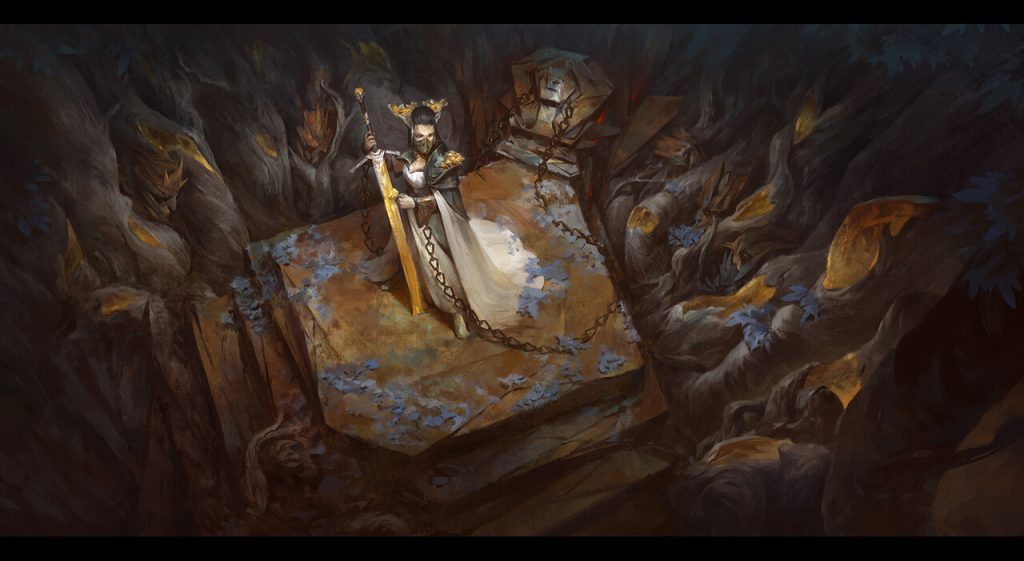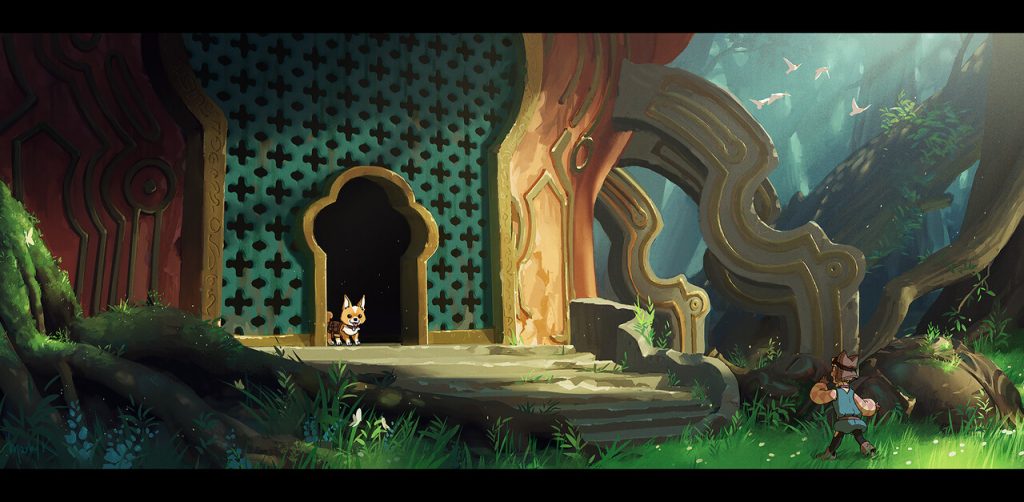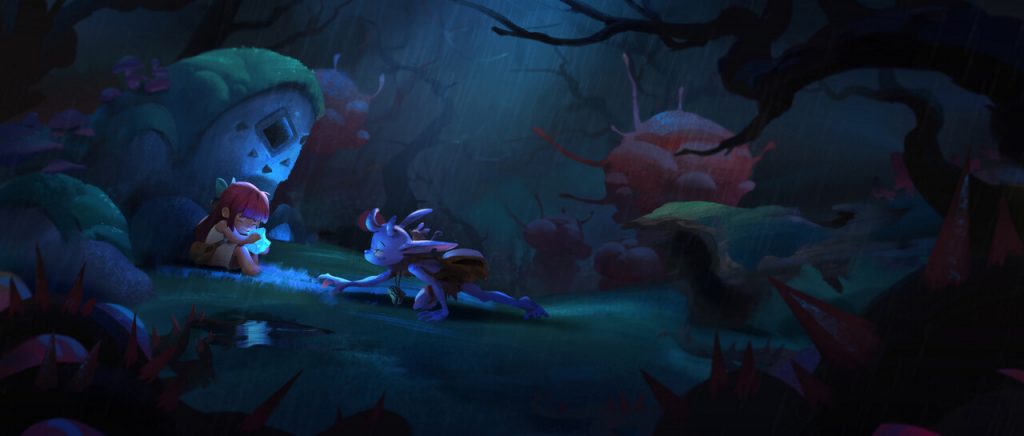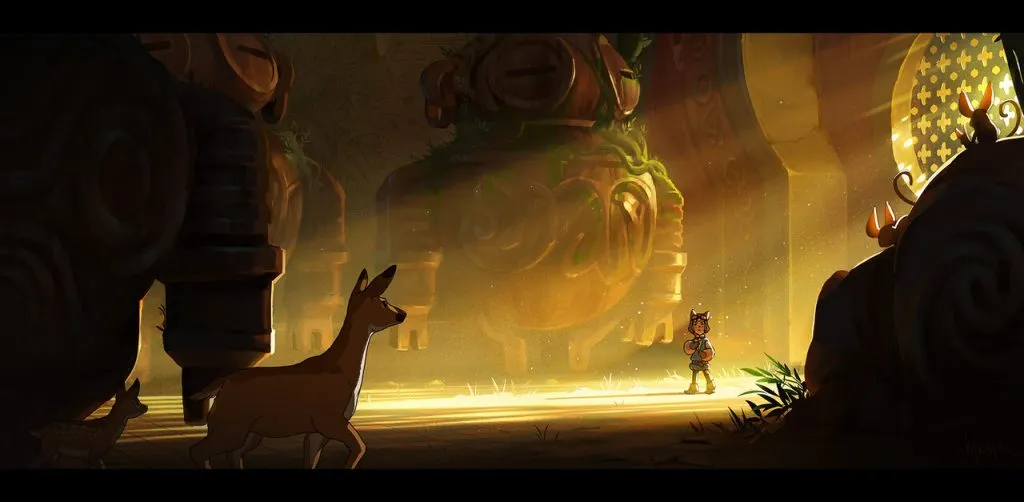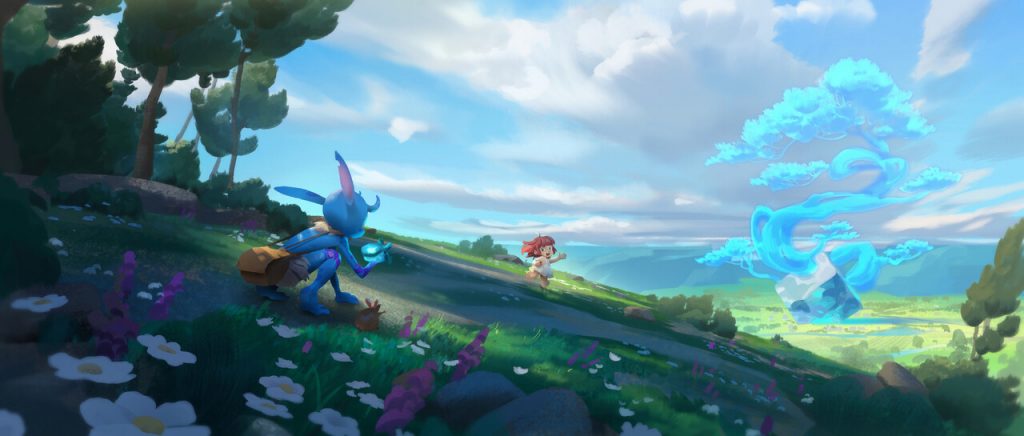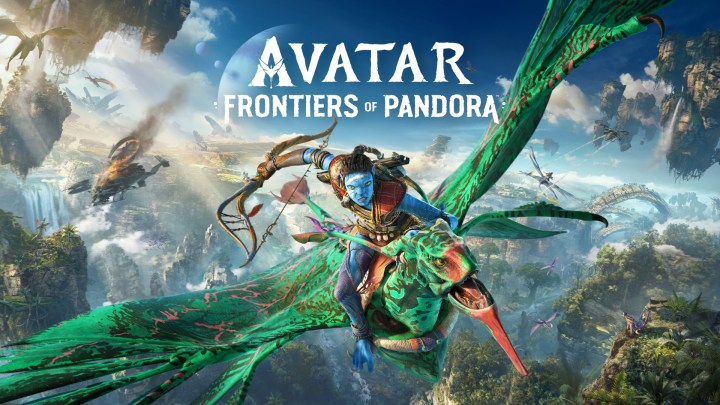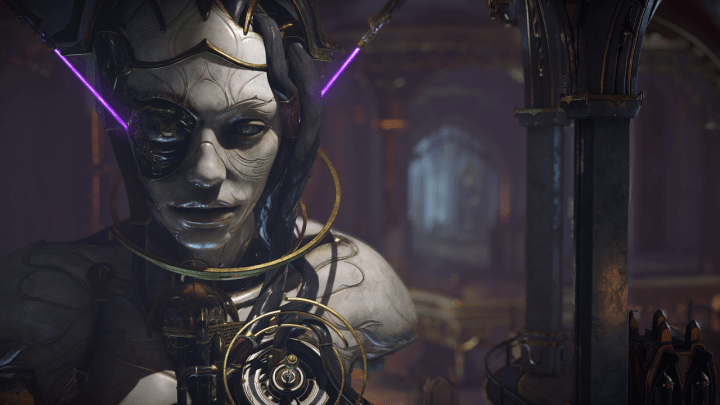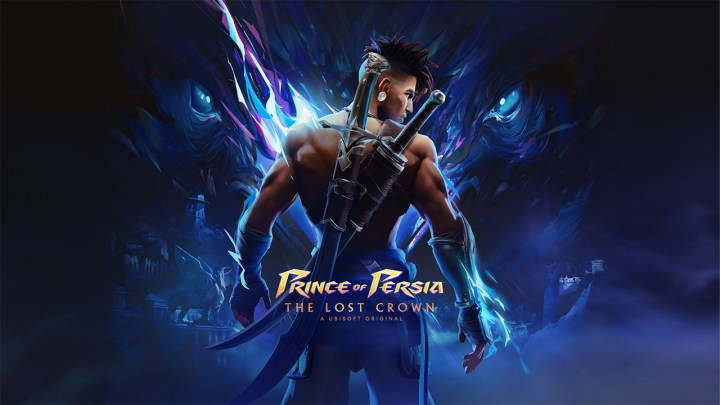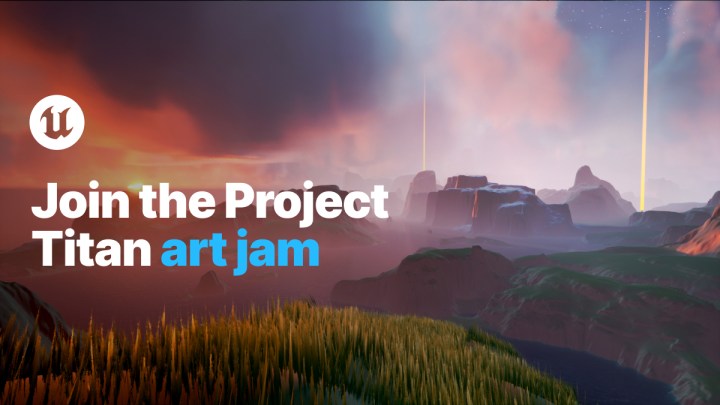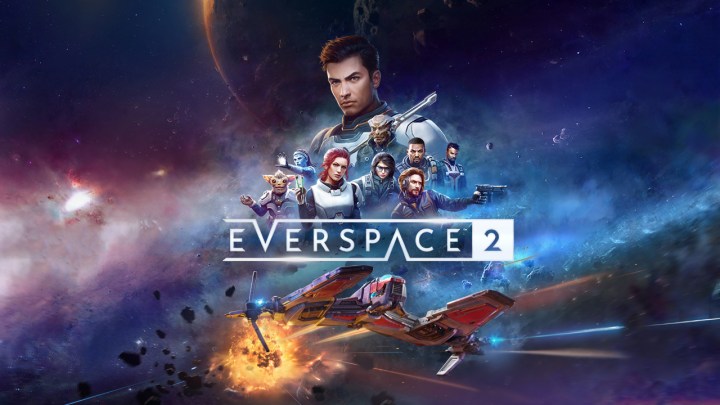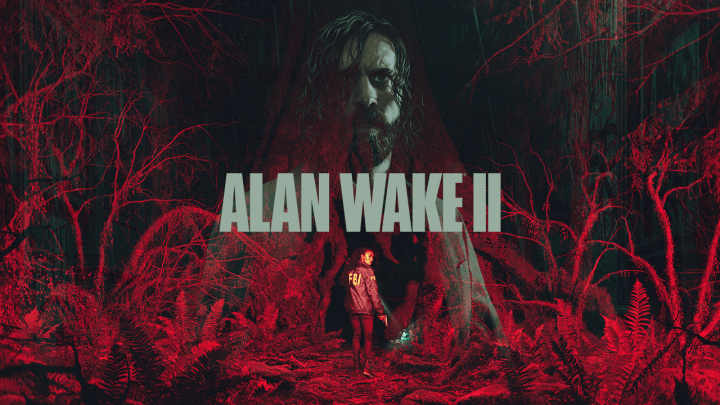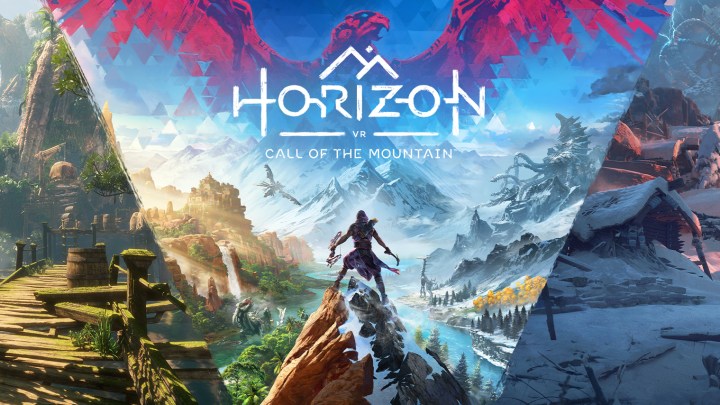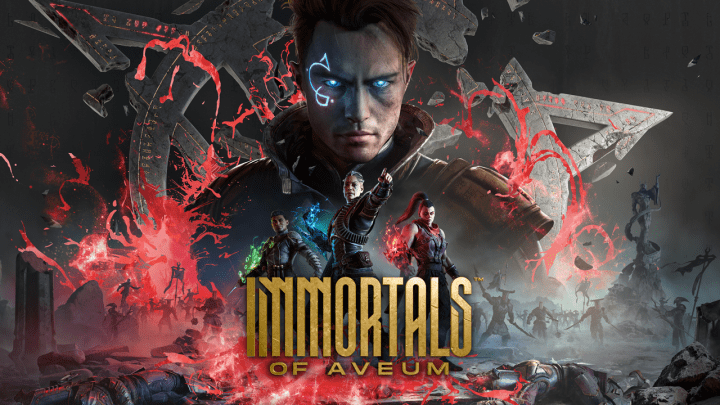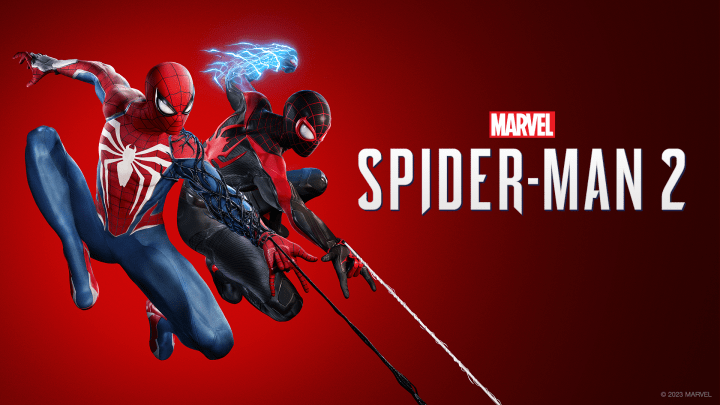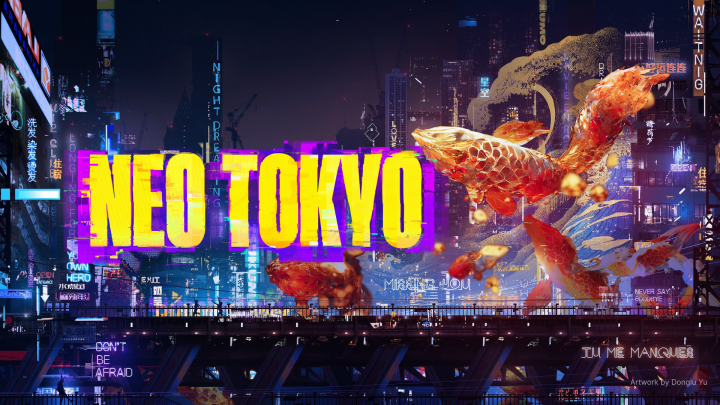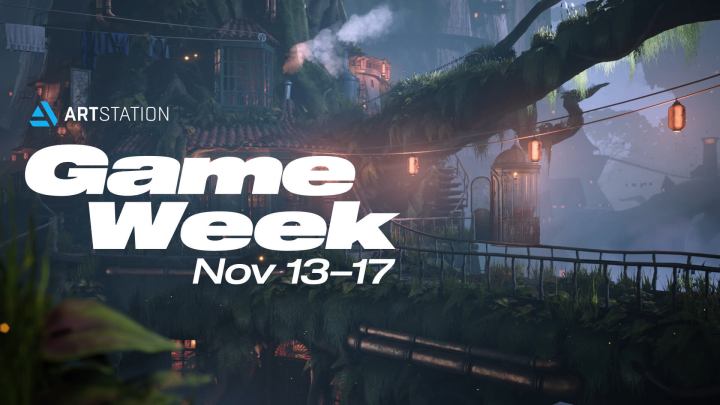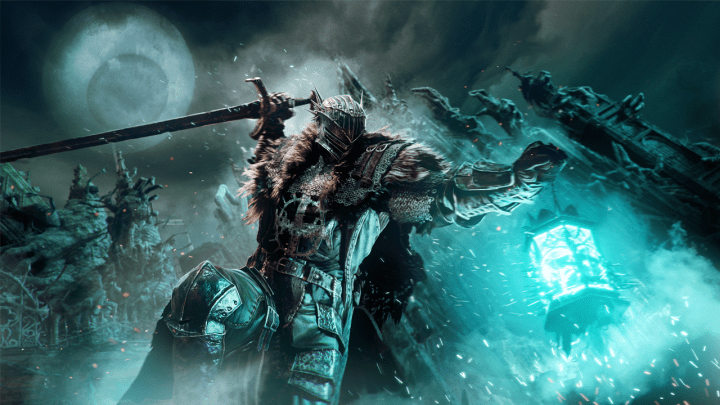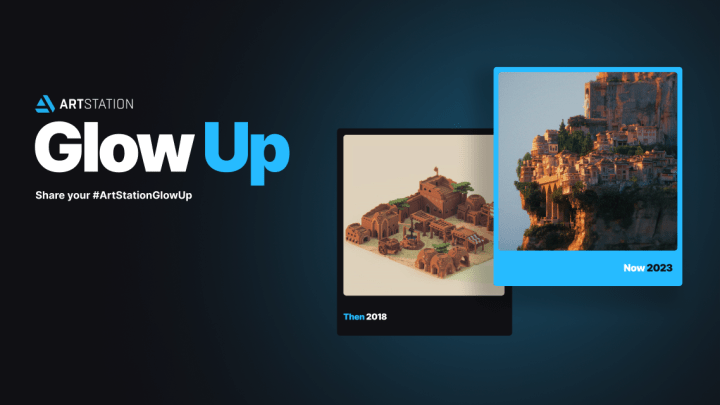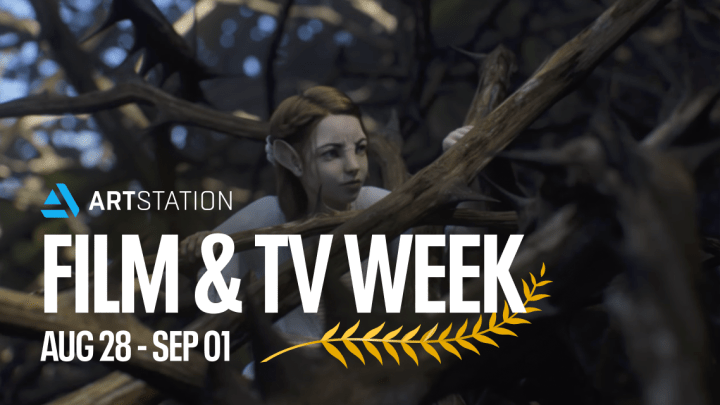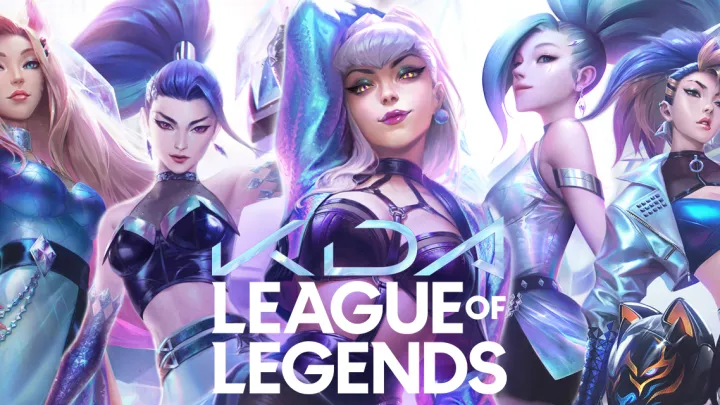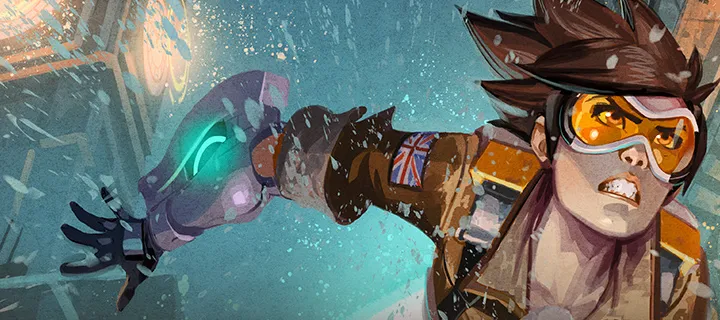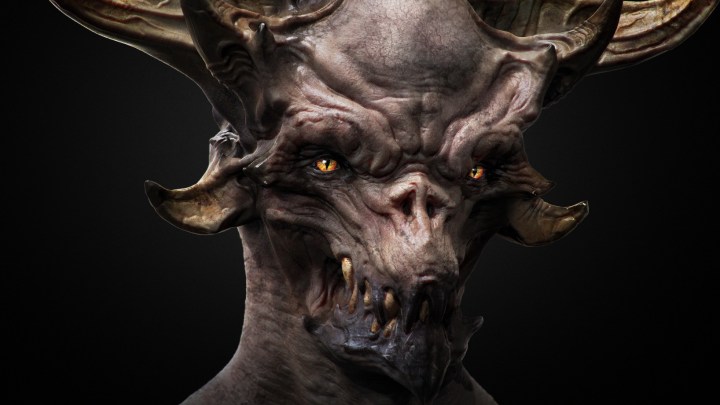Box of Mystery Challenge: Keyframe Design Winners Interview
Keyframe entry by Taras Susak
The Lightbox: Box of Mystery Challenge invited artists to imagine a mysterious world of wonder where creativity is the way. The participants of the Keyframe category were tasked with creating four keyframes that show key narrative beats in their story.
Browse all Keyframe entries from the Box of Mystery Challenge.
In this interview, the winners Taras Susak, Marby Kwong, and Ngan Pham share their process, experience, and advice to future challengers.
Keyframe entry by Marby Kwong
Where did you get your inspiration for your submission?
Taras: I didn’t have a specific goal when looking for references. I just saved whatever I liked. As a result, I settled on the idea of a struggle of opposites, organics, and rusty metal.
Marby: I have a lot of love for old Ghibli movies, and strong visuals in games such as ICO and the Zelda series.
Ngan: When I first looked at the challenge, Bobby Chiu’s artwork on the cover with the blue glowing box was my first hit of inspiration. Also, I just finished playing Ori and the Will of the Wisps so that was a strong inspiration for me too. The story for my submission was about a child lost in the forest who found her way home with the help of a blue creature. Some details in there hint that the blue creature was also a human but was turned into that form.
Keyframe entry by Ngan Pham
What was your strategy for completing your submission on time?
Taras: As a matter of fact, there was plenty of time. It took me 2 to 3 hours a day after work and the weekends – the main thing is to adhere to the pipeline. My creative process begins with the research of compositional shapes and placing accents on the format. Then I cleared everything with lines. In the frames I was confident with, I started working in color right away, and for the others, I started with the grayscale and then applied colors.
Marby: Because of the tight timeframe, I didn’t have much chance to explore too many sketches, so I went with pretty much the initial first pass idea for each scene. Luckily once I had the basic plot and characters decided, the visuals came together on its own. Blocking out the scenes in 3D meant it could buy me some time to explore some different compositions too.
Some keyframes ended up entirely different from the initial thumbnail as a result, which was a fun process. I made a big mood board with all the elements I knew I wanted to include in each keyframe: lighting, certain types of plants, clothing, color palettes etc. Every time I felt like I was running out of steam or unsure how I wanted something to continue with a design, I’d have a look through the mood board to refresh myself or spot something I didn’t notice firsthand and get reinspired.
Ngan: My first strategy was definitely to check on the other entries by many great artists who previously participated. The beautiful artwork gave me a kick of inspiration to keep moving on with my entry. The next one was the 10 minutes rule. After a long day of working, I would feel too tired to even pick up the pen and continue with the entry. But I watched a video about the 10 mins rule where you just do something for that amount of time every day and things will then be done!
Most of the time, I went over the 10 mins limit. For my entry, everything started with the keywords. I put them everywhere on a canvas and found a random connection between them. As things went on, the ideas started to come out more clearly. I wanted to give my entry a beginning, middle, and an end so I used the colors to express that.
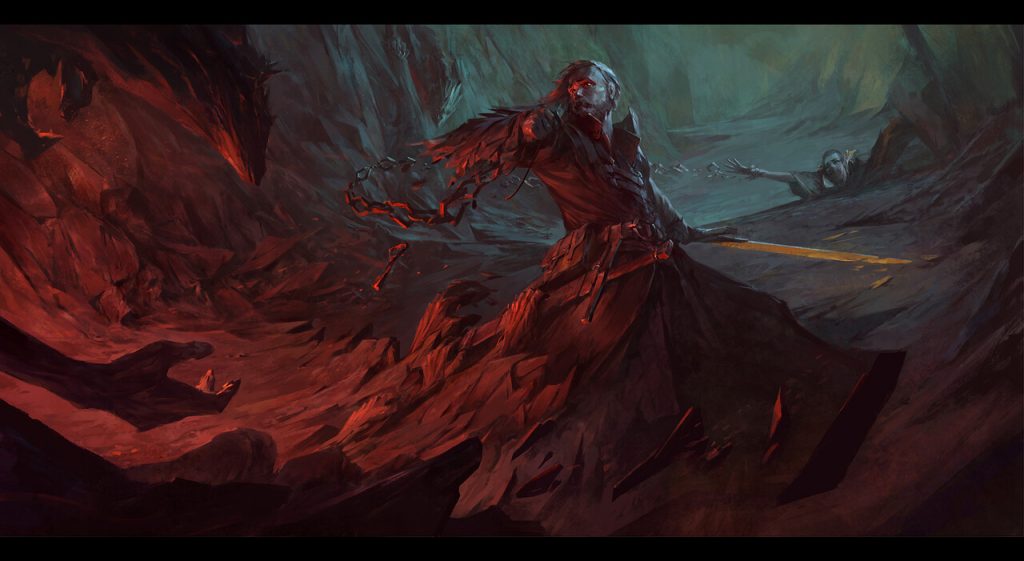
Keyframe entry by Taras Susak
Which part of your submission did you struggle with the most?
Taras: I think that the most difficult thing was to convey the corresponding emotional state in all frames because it is the most important thing in every illustration. It was especially difficult for me to convey the right emotion in the third dynamic frame since I do not have much experience in such compositions.
Marby: My last keyframe (the town scene) was my biggest struggle and in my opinion, the weakest of my 4. I think if I were to reattempt that keyframe now I’d probably be able to improve it. I did them all chronologically and found the biggest struggle was the landscape format I’d created the first 3 keyframes in, but the final scene needed to be a bustling town, with a focus on the sky.
I wanted to show the “culture” of the townspeople and architecture so the camera had to be down at street level too. It made it very hard to fit the sky in, and in hindsight I probably should have chosen a much more dynamic angle, sacrificing some of the building designs and townspeople instead. Trying to squeeze everything in probably weakened that composition the most overall.
Ngan: For me, the hardest part was laying out the scene, which in my opinion I still did not do that really well. In my profession, most of the works I did that involve keyframes were painting over the pre-rendered 3D. That gave me a boost in deciding the mood and color but also had me struggle when creating something from scratch. So this challenge really did help me a lot in realizing that and motivated me to learn more about layout and compositions for animation.
Keyframe entry by Marby Kwong
What advice do you have for future challengers?
Taras: Do not be afraid to make mistakes and treat the challenges easily. Be at ease so that the work process is enjoyable.
Marby: Define your thumbnails early on. Assess which scenes will be most complex and make sure to leave extra time to do them. I scheduled a week limit for each keyframe but gave myself extra time on the last one, as I was worried due to the complexity it could take a lot longer. My schedule really helped me check that I wasn’t spending too much time concentrating on one keyframe and I made sure to leave a buffer at the end so I could tweak anything if I needed to.
Ngan: To the future challengers, this is definitely the time to do the things that you are most passionate about! But also, have some rest and don’t overwork yourself as I’ve seen some of my friends dropped out near the end because of burnout, which was really sad.
Keyframe entry by Ngan Pham
See more Keyframe entries from the Box of Mystery Challenge >
